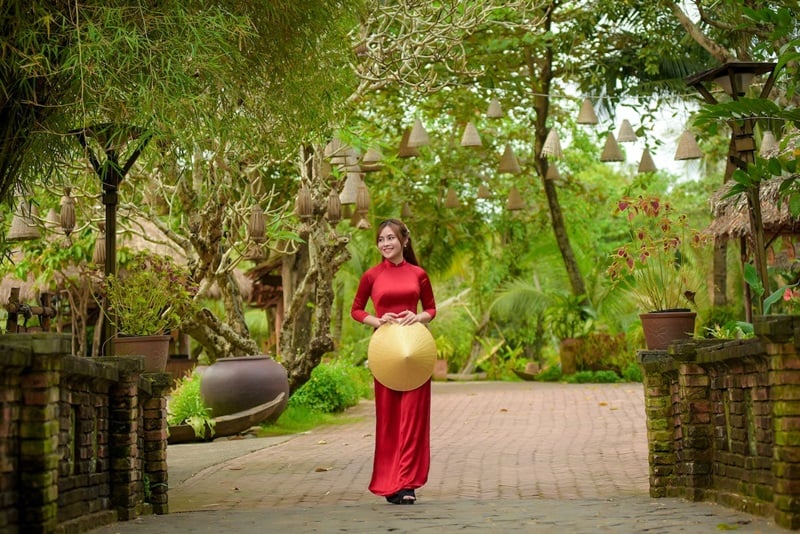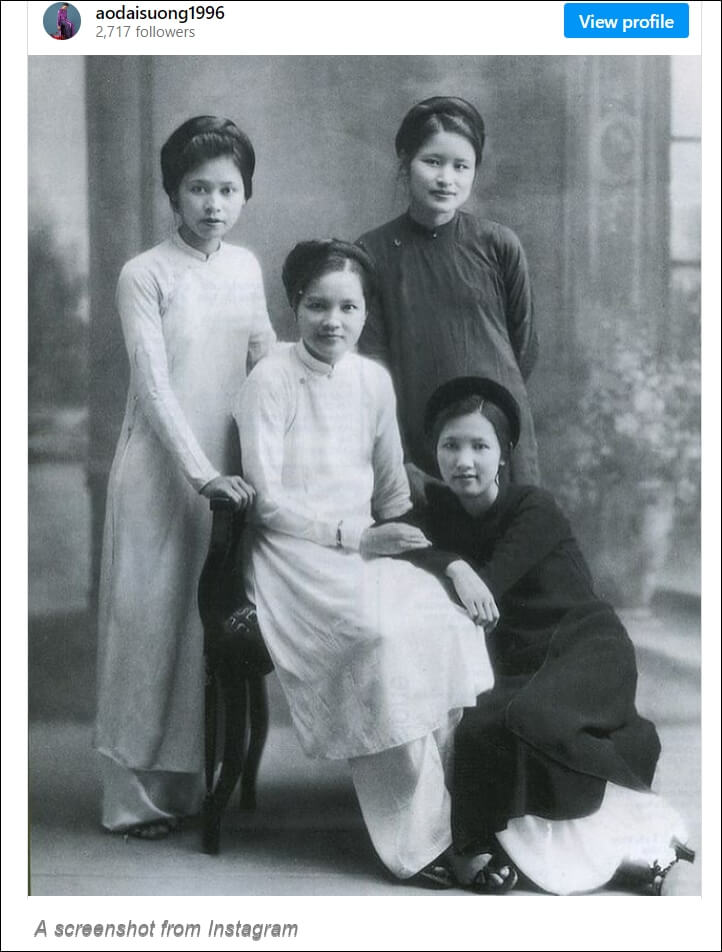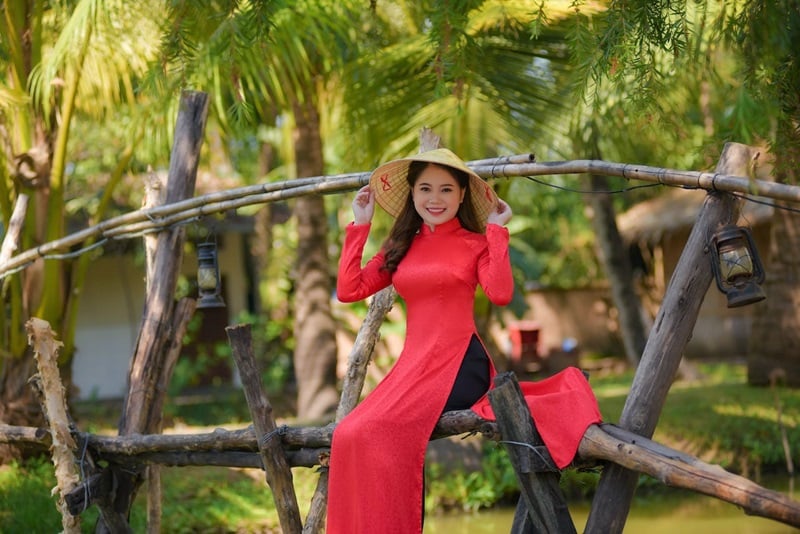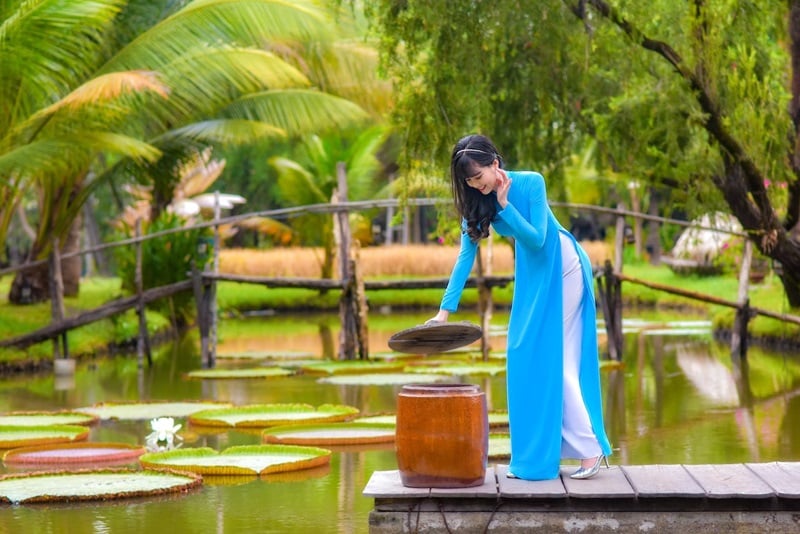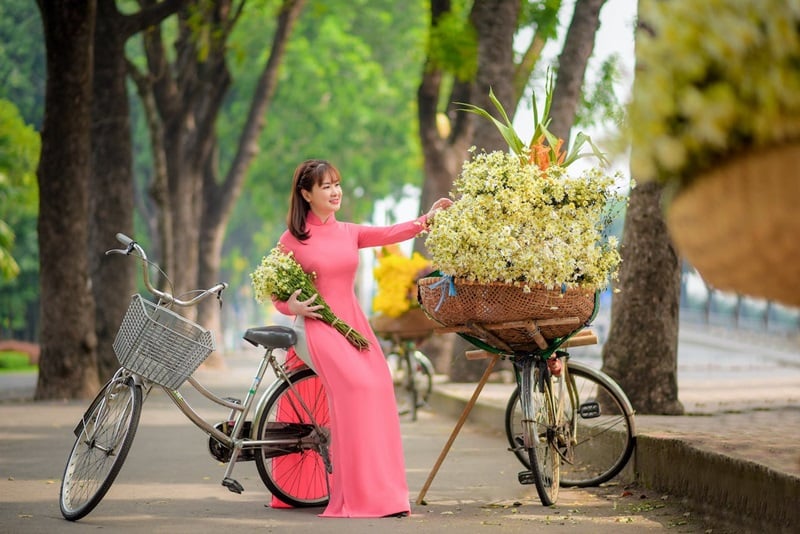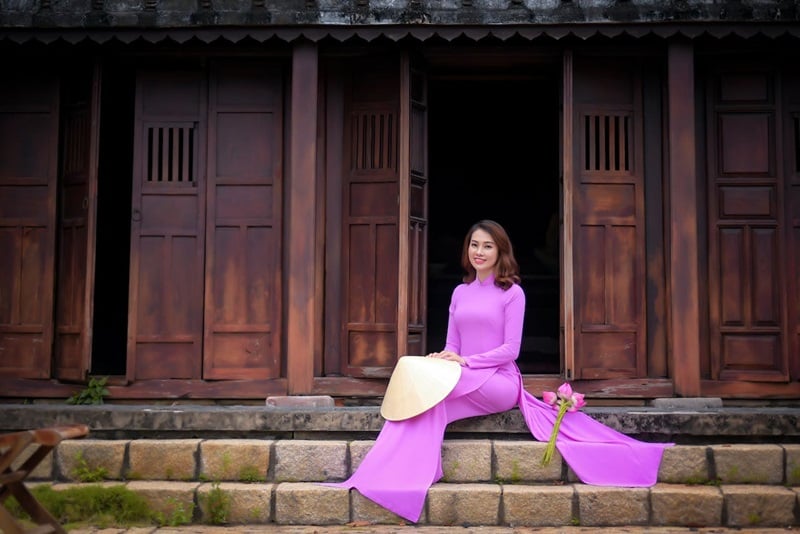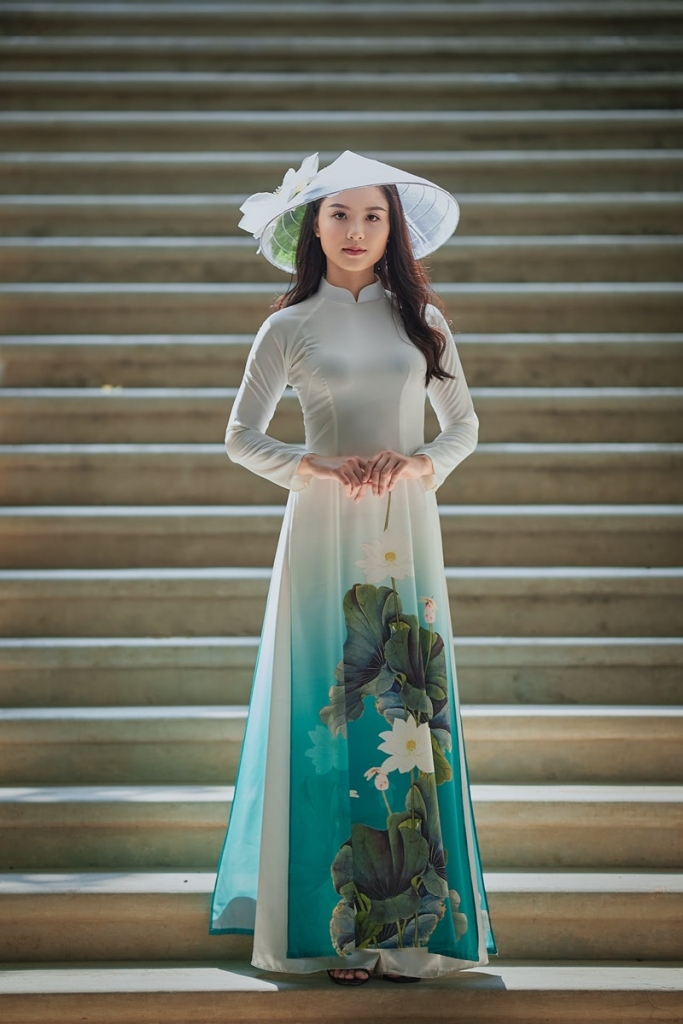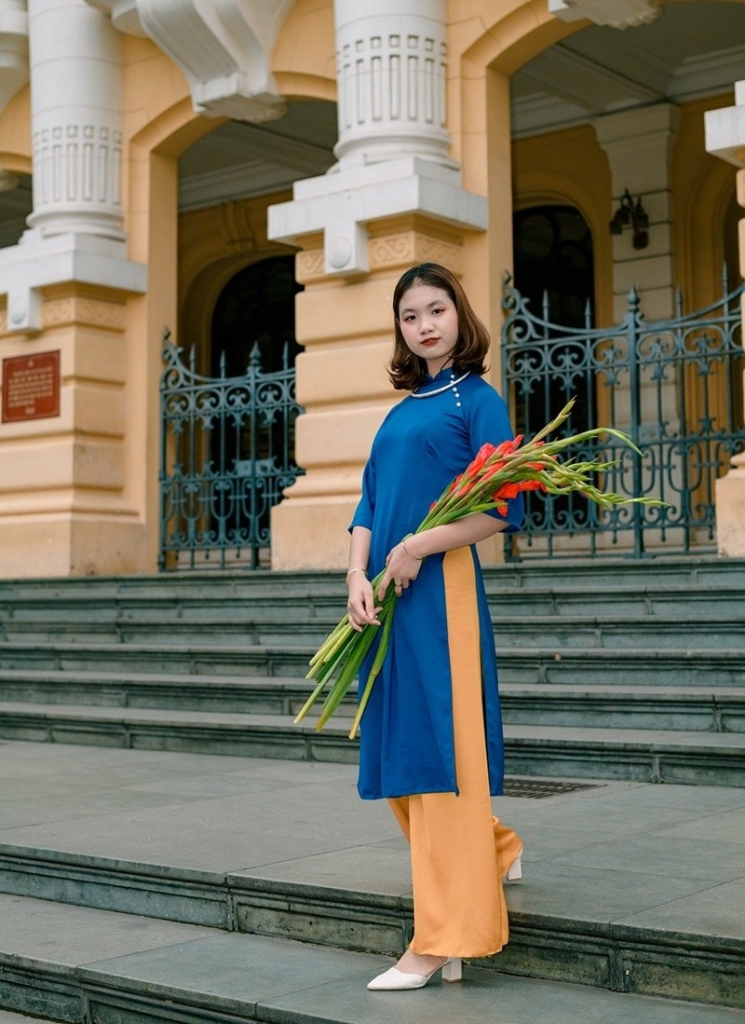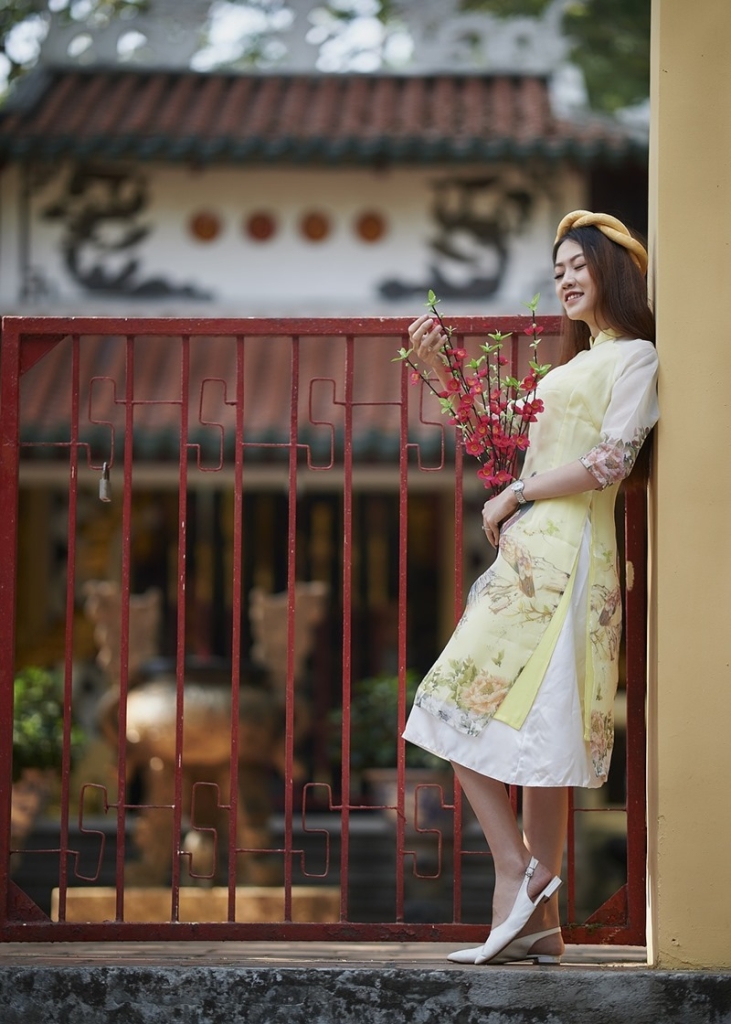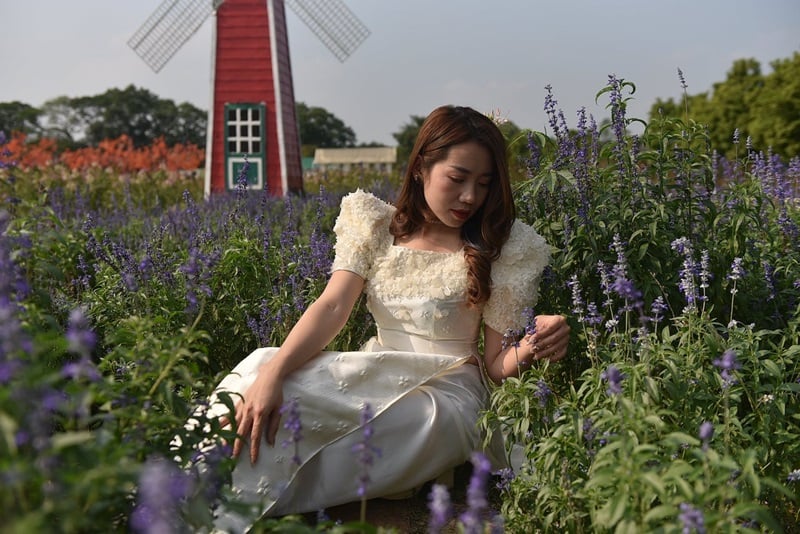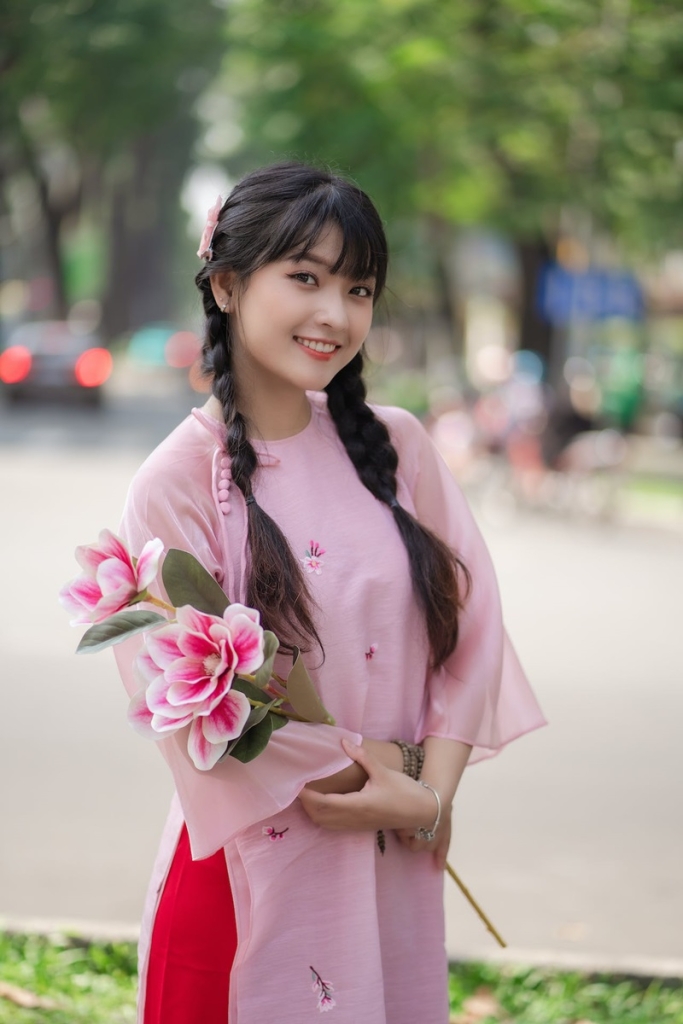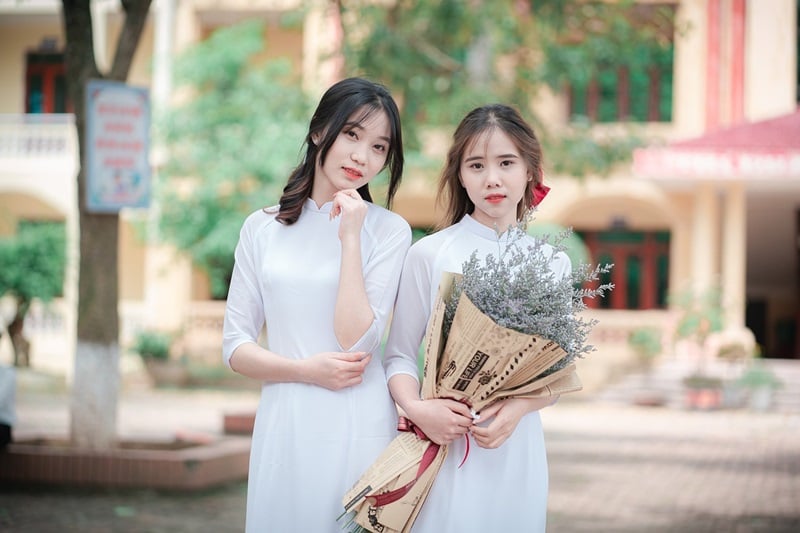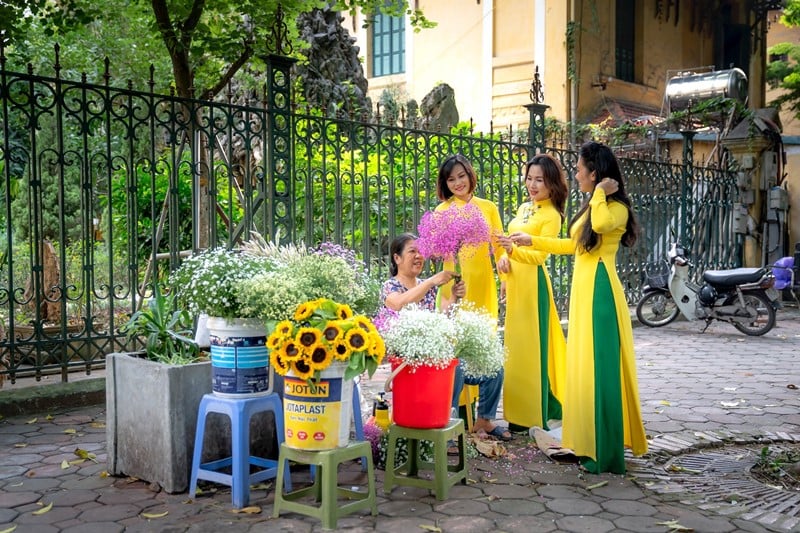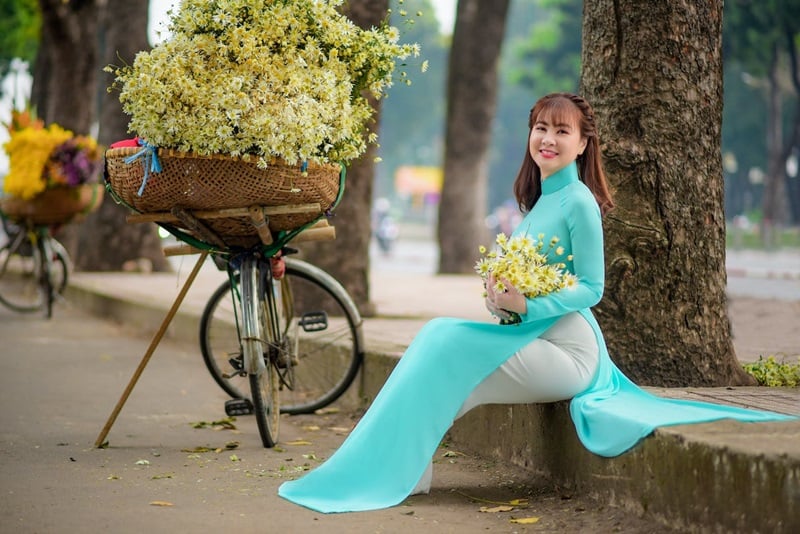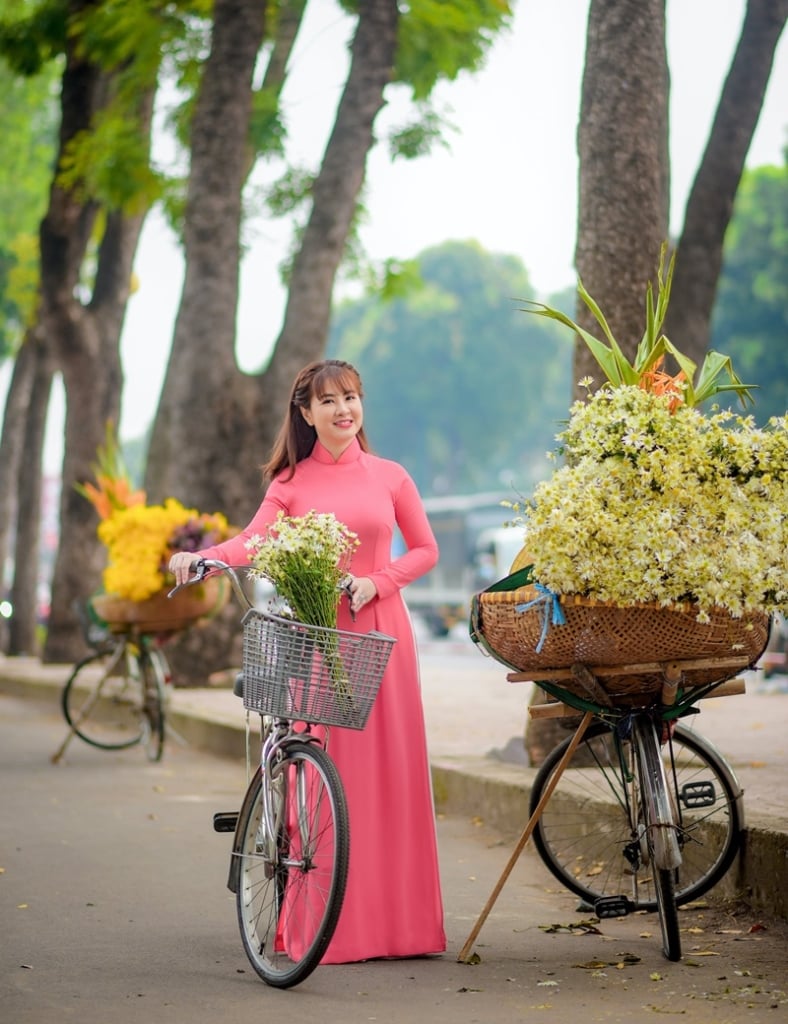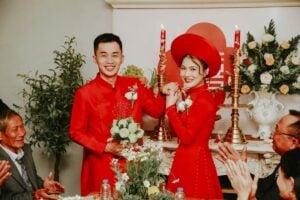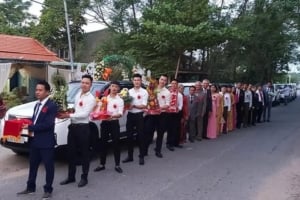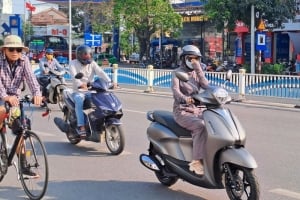Ao dai has become a traditional dress associated with the beauty of Vietnamese women. It is possible to affirm that the sophistication, grace, and tolerance of the Vietnamese female are encapsulated and fully expressed through their traditional costumes. As a Vietnamese female, everyone wants to wear a flowing ao dai.
1. History of the formation of the Ao Dai
Many different opinions exist about the origin of the ao dai. Some say this traditional dress originated from the four-flap clothes, while others say its most ancient background is Giao Linh clothes. A few people also claim that the ao dai originated by changing from the dress of Ngu Than or the Ngu Than Lap Linh.
Regardless of the assumptions, one thing for sure is that the current Ao Dai that Vietnamese women are wearing today is the first complete version of the design of artist Le Pho. Based on the Lemur ao dai created by artist Lemur-Cat Tuong in the late 30s of the twentieth century, Le Pho developed a charming style called Ao Dai Le Pho. The design now has a miniature size that hugs the wearer’s body, the laps touch the ground, and the colors are delicate, fashionable, and sexy.
By 1960, the Raglan ao dai appeared from the Dung tailoring shop in Dakao Ward in Saigon, quickly winning wearers’ hearts. This design got an upgraded version of Ao Dai Le Pho. Raglan ao dai hugs the body more closely, the sleeves have a flexible design, and the buttons are replaced by pressed buttons on the side. Also, from this model, the style of the ao dai was shaped and became the perfect traditional outfit for Vietnamese females.
2. Vietnamese Ao Dai that encapsulates a woman’s charm
If you need to use an image to express the lure and beauty of Vietnamese women, the ao dai is the perfect choice.
A complete set of these traditional clothes includes two main parts: a long dress and pants. However, because the design of the long dress will determine the entire aesthetic of the outfit, people are still used to calling this outfit Ao Dai; Ao means the dress or lap, and Dai means long.
The original design of the ao dai includes an upper body that hugs the wearer’s shape. The neck is stiff and high. Long sleeves hug the arms tightly. Rows of buttons run from the collar to the armpit and the waist. The front and back flaps are floor-length.
The accompanying pants have a wide leg shape, long beyond the lappet’s hem, and various color tones to ensure harmony with the color of the main dress.
The dress and pants are sewn with light – soft – shiny fabrics and bright colors, such as brocade, silk, and velvet.
With a tight-fitting design on a soft material background, the ao dai highlights every seductive curve of the females. Meanwhile, the collar stands up as a unique way for the wearers to show off their high and round necks. The long flaps of the dress flutter lightly with each step, creating an impression of grace and elegance.
Although ao dai is seductive, exuding all the women’s attractive and powerful beauty, it is still very discreet. The wearer hardly exposes any sensitive skin to the outside.
From here, it can be seen that these traditional clothes are like the charm of Vietnamese women. They enhance the sexy and seductive beauty of the body and are also discreet, gentle, and elegant.
This dress represents the type of woman who knows how to express beauty in an outside appearance while promoting the values of the soul and the Asian character inside. The mothers and sisters in Vietnam are loving, gentle, and respectful of morality and humanity.
3. Innovative variations from traditional ao dai
The equally unique thing that makes the charm of Vietnamese traditional dress is its immense ability to vary and innovate based on the creative mind of the stylist.
There are many popular innovative models, such as:
3.1. The most popular innovation is using patterns and accessories attached to the flaps. These patterns can be found on the fabric of the ao dai. Some others use printing or embroidery to add their favorite images and new designs to the bodice and flaps. It can sometimes be a pair of birds, a dragon, a phoenix, a beautiful river landscape, just as simple as a few flowers, or selected Vietnamese symbols. Others like to attach accessories from simple to expensive, such as pearls and gemstones, to the flaps’ different positions.
3.2. Another innovative pattern is the change in the lappets. The laps have different variations depending on the purpose and space in which Ao Dai appears. At fashion-related shows and beauty contests, its front lap width will be expanded according to the designer’s intention. Meanwhile, the back flap can expand its width and lengthen to create a unique tail.
With modern street-style ao dai, its lap is often shrunken and cut short to knee level. This modified version is intended to create flexibility for the wearer, often chosen by young people.
Occasionally, there are styles where the front flap is split in half to form two single flaps combined. A double flap also includes one closed flap inside (the ordinary one) and two single flaps (the main ones) outside.
3.3. Innovative version of the pants: Along with the change of the dress flap, the pants also have many eye-catching changes. Lots of young people combine the modern model with shortened flaps and light-fitting pants like jeans and khakis.
Others replace pants with flared skirts. At this time, the whole outfit will only reach over the knees and no longer touch the ground like a traditional long dress. Vietnamese youth love this innovative model because of its flexibility and neatness, but not less discreet and charming.
3.4. The innovative ao dai model changing in the sleeves is also popular. The sleeves can be puffed at the shoulders and biceps for women with large biceps. Occasionally, sleeves only reach elbow length to create a sense of flexibility. Another variant lengthens the sleeves almost to the hem with a slit starting from the biceps.
3.5. The last popular variation that appears quite frequently is done on the collar. From a hard and high collar, depending on the wearer’s preferences and body shape, the fashion designers change it to a deep-cut neckline, heart neckline, boat neckline, round neckline, or open shoulder.
The above creative changes bring traditional dress closer to Vietnamese women’s daily lives and help elevate the ao dai to a new position in today’s developing fashion scene.
However, no matter how advanced the innovation, the ao dai still retains its inherent appearance of elegant and graceful features. When wearing an Ao Dai, alluring curves, charm, and nobility for a Vietnamese female will be exalted into a symbol of beauty and art.
4. Where and when do the Vietnamese females wear Ao Dai?
Ao dai appears anywhere in Vietnam. However, because it aims to be convenient in daily activities, it is often only used as streetwear, in temple ceremonies, at school, at work, or to show off one’s figure.
However, in some situations, the traditional long dress is mandatory clothing in Vietnam, such as:
4.1. At school: Female teachers in most schools in Vietnam comply with the regulations on wearing traditional dresses according to a fixed schedule applied in a week. Also, a white ao dai is a mandatory outfit for female students entering almost all high schools. This regulation can help form an elegant style for female students on the threshold of adulthood.
4.2. In government offices, female civil servants also need to follow regulations on wearing ao dai on certain days of the week, month, and year. In particular, at important events of local authorities or the government, ao dai is worn by default as an irreplaceable outfit for female civil servants.
4.3. Ao Dai appears in important traditional ceremonies of Vietnamese people, such as weddings, pagoda ceremonies, Tet holidays, or formal worship ceremonies. In most weddings in Vietnam, ao dai is a mandatory outfit for the bride as well as those attending the main ceremony. Women attending a wedding party can flexibly choose ao dai or alternative costumes. However, ao dai is still favored for this special event.
In addition, female employees often choose the traditional long dress as their main outfit at some service businesses such as tourist attractions, restaurants, hotels, etc. They, at the same time, will receive uniforms of Ao Dai from their bosses as a way to increase politeness, charm, and elegance in the workplace.
5. Price to make a traditional Vietnamese dress
When preparing to make a pretty Ao dai, the first step is to buy beautiful clothing and then find a reputable tailor.
The price of a lovely Ao dai is very different from the materials, designs, jewelry pieces, tailors’ skills, and time to make it. The average cost can range widely from 800,000VND to 5,000,000VND.
5.1. Average price list of tailoring
This price is for a Vietnamese long dress, excluding clothing that you can buy somewhere to carry to the tailor shop to make it.
- Normal Ao dai for students: from 300,000 VND – 700,000VND
- Ao Dai for a Vietnamese wedding: from 800,000 VND – 2,000,000 VND
- A standard long dress (material of chiffon, silk, glossy fabric): from 500,000 VND to 1,000,000 VND
- Lace long dresses: from 600,000 VND – 1,500,000 VND
5.2. Price list of Ao Dai package
The package price includes sewing work and fabric. You can usually choose the fabric right at Ao Dai stores. A set consists of a long dress and paints.
- Ao dai is a traditional Vietnamese wedding dress for a bride: 1,500,000 – 5,000,000 VND / set
- Ao dai for men: 1,000,000 – 3,000,000 VND / set
- Regular dresses (common materials): 800,000 – 2,000,000 VND / set
- Uniform dresses (for students or workers): 500,000 – 1,500,000 VND / set (depending on the quantity and fabric)
- Middle-aged Ao Dai: VND 800,000 – VND 4,000,000 / set
Also, there are additional costs for designing lace embroideries, crystals, and beads. Additional prices range from 200,000 VND to 3,000,000 VND.
Tip: Ao dai has an intensely personal fashion style. Most of the available-made dresses in Vietnam are not suitable for wearing beautifully. So, you need to come to a tailor shop and order a tailor-made Ao dai. The time to make it can vary between shops, from 6 hours to one week. Hoi An is the fastest order, but it costs a higher price.
Traveling to Vietnam, you will see images of many women dressed in long traditional dresses with different colors and variations, which often come with Vietnamese hats, happily walking around the streets or posing for photos in front of beautiful landscapes.
In particular, after school, at the high school gates, many white ao dai laugh carelessly and walk freely down the street, creating a heart-stoppingly beautiful scene.
Along with the country’s development, Vietnamese traditional dress for women has appeared all over the world- at fashion shows, in the Vietnamese community abroad, or in beauty contests. And no matter where you are, the graceful ao dai always captures the hearts of viewers and the wearer.
Whenever traveling to the peaceful country of Vietnam, international friends often choose to buy or order a set of ao dai for themselves as a beautiful souvenir. You can also bring these charming traditional costumes as gifts for the beloved children in the family. It could be a gift that is awaited and cherished.

